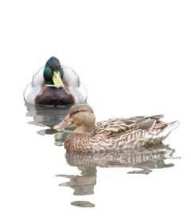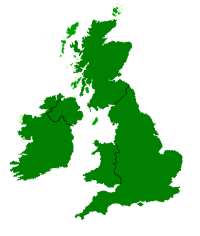|
Photography
|
Mallard Plate | ||||
|
|
|||||
| Distinguishing Features |  |
||||
| Height 58cm (23in), Drake: bottle green head, white ring separating purple/brown breast, eclipsing during summer months to a similar colour as the female which is brown. Both sexes have wing patch (speculum) which is blue/purple, edged with black and white. | |||||
| Food | |||||
| Seeds, water plants, some aquatic animals and insects. | |||||
| (Anatidae)
anas platyrhynchos |
|||||
|
|
|||||
 |
Nesting | ||||
| Between March and July. Clutch of 6 to 14 eggs, overall buff/olive green. Incubation appx 28 days. One brood tended by female. | |||||
| Habitat | |||||
|
Lakes, ponds, slow moving rivers, town and city parks, reservoirs. |
|||||
|
The darker green on the map above indicates
where you are most likely to see a Mallard.
|
|||||
|
|
|||||
| Other information | |||||
|
It is highly likely that on your travels somewhere in the British Isles that you will have come across a Mallard. One of the most common and most urbanised of all ducks the Mallard can be found just about anywhere there is water. The drakes can often been seen in large numbers chasing one solitaire duck during the mating season. During this time the drake will moult into an almost mirror image of the female (duck), although slightly darker. The end of the breeding season heralds the return of the drakes vibrant colourful plumage. |
|||||
| [Home] [News] [Gallery] [Birds] [Discover] [About] [Contact] [Members] | |||||